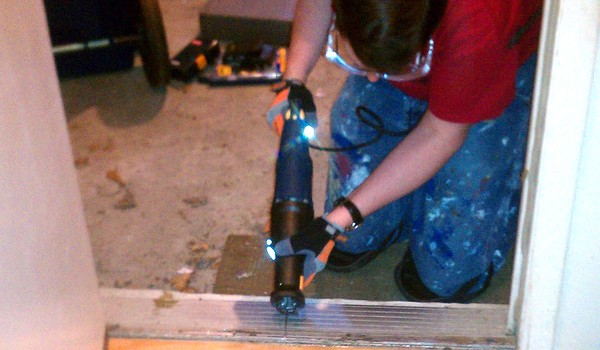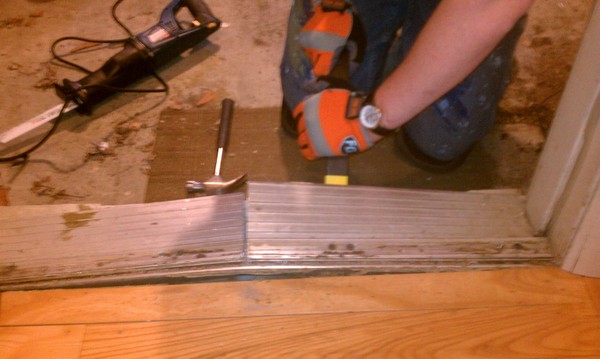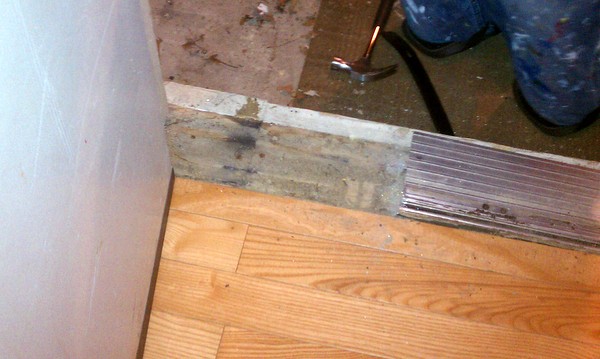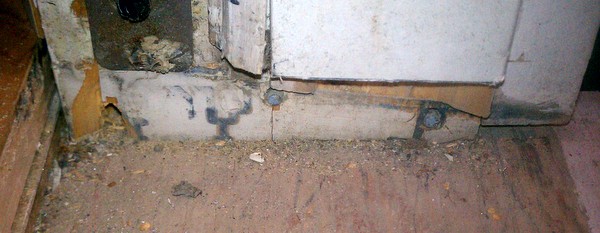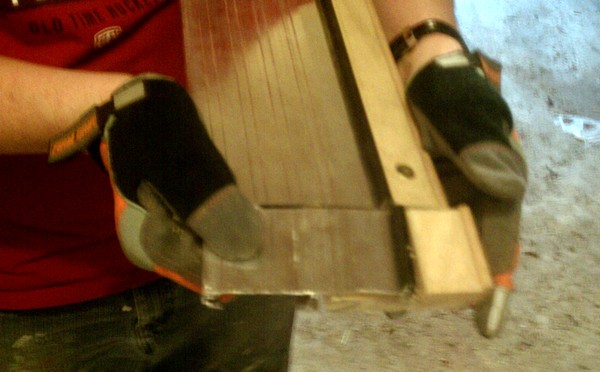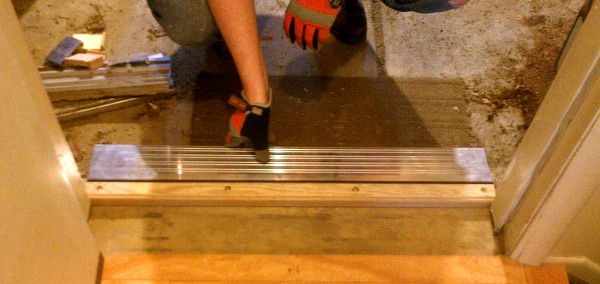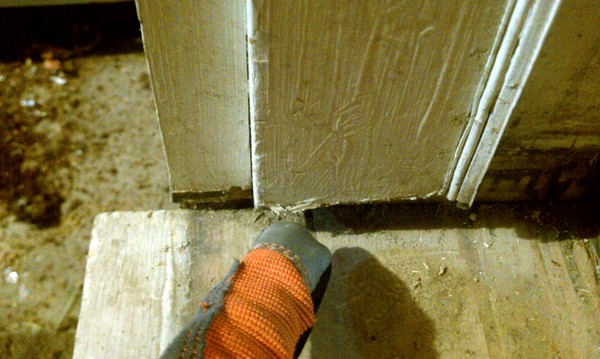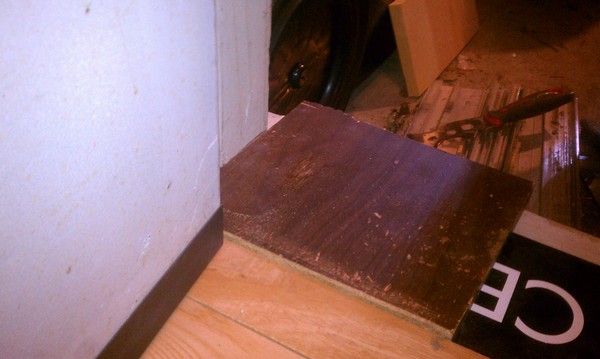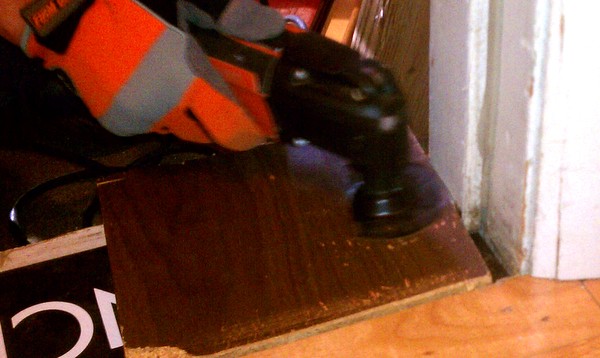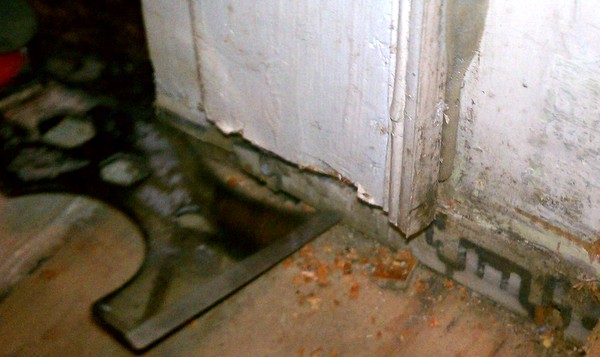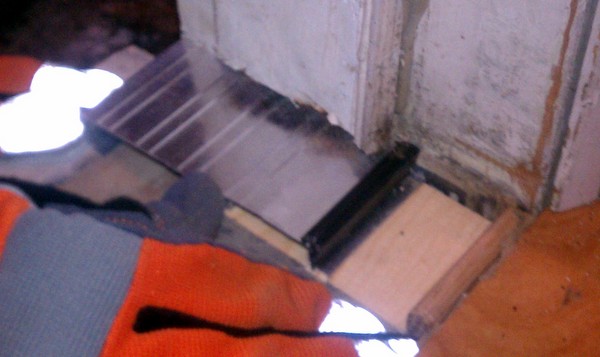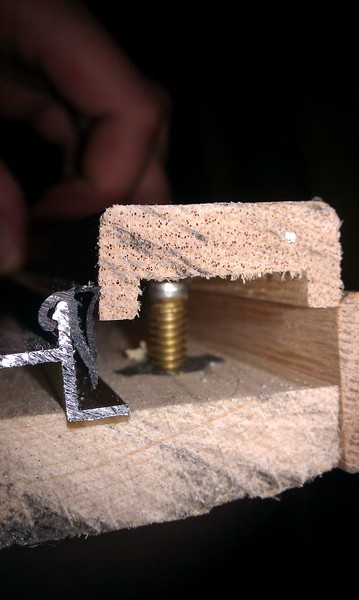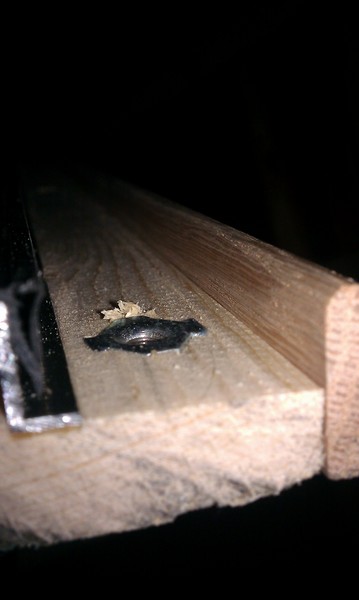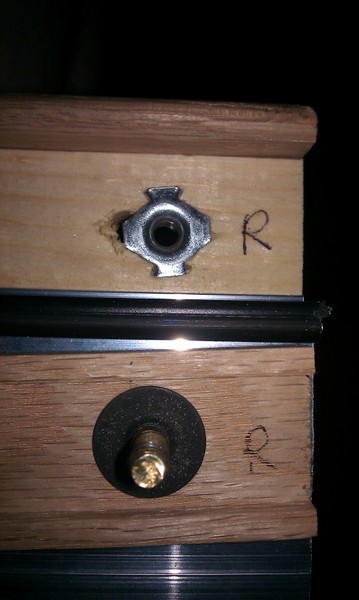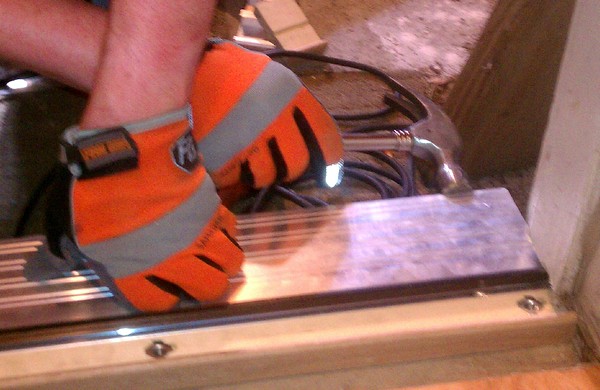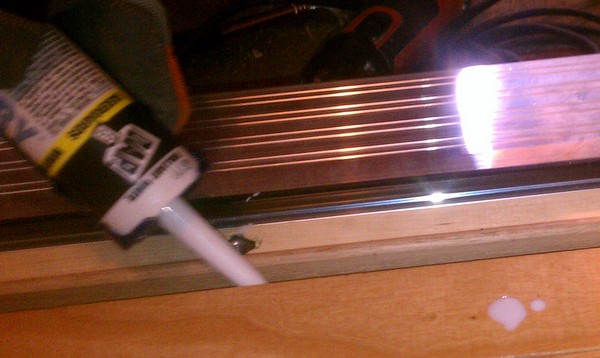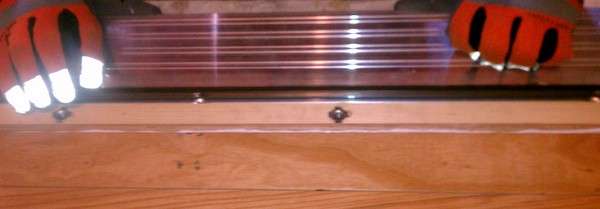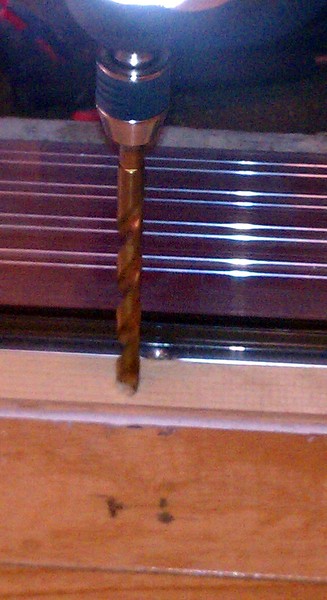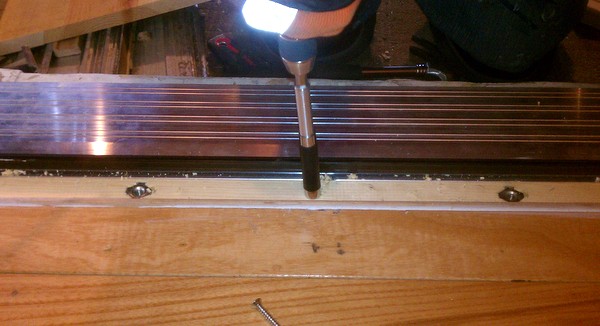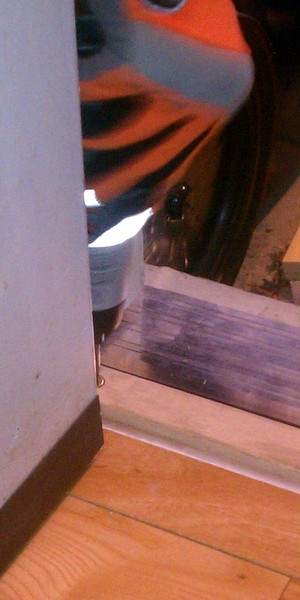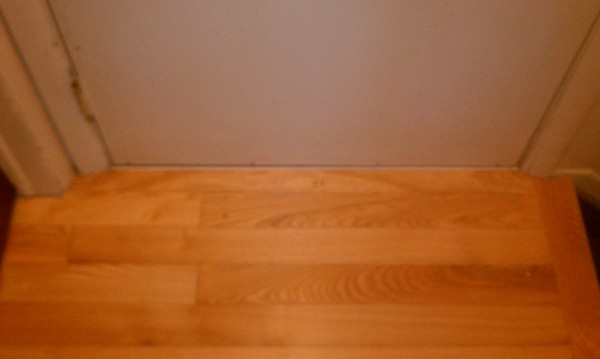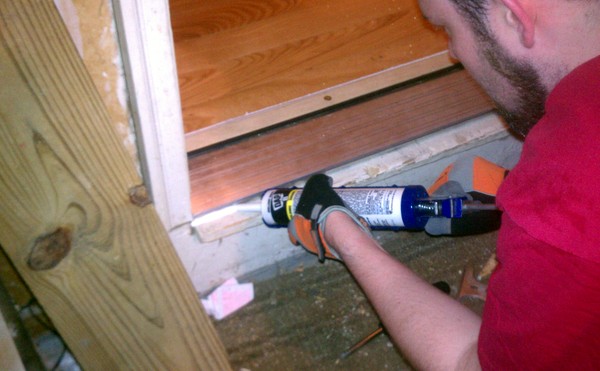Last night was the quarterly hackathon at work, the day where we get to work on something fun and new until 4am and then demo to the team. Beers were drunk, Thai food was eaten and the sports tournaments were played out (darts and ping pong, or table tennis, if you prefer). It was a great time and although my work wasn't as brilliant as some of my colleagues, I felt accomplished by the time we crawled off for breakfast sometime around 7am.
That was 6 hours ago. I'm still awake. I've been awake since sometime between 7am and 9am yesterday.
I don't know why, really. I ran an errand for the wife this morning and one thing led to another. Before I knew it, I had not only completed the errand (returning some plants and a grow light stand to Growing Hope after Chrissy did some seed starting for them), I had also completed our own grow light stand (a project we purchased the pieces for back when I made the raised bed) and cleaned the cat litter boxes. Luckily for you, I didn't take pictures of the latter task; I'm keeping those precious memories of being watched by a cat while I dug around in his feces (mostly) to myself, but I digress.
Often, when you garden, you have to start some seeds. When the weather is inclement prior to the growing season, as it often is in these parts, you need to start those seeds indoors and, much like this winter in Michigan, there's no Sun indoors (I'm thankful for that, I like my stuff unsinged), so an artificial source of equivalent light is required. That's where the grow light stand comes in.
Unlike the one we had borrowed from Growing Hope, which was a simple wood construction with two A-frames at each end joined by two planks from which the 4' long fluorescent grow lamps were suspended, our grow light stand was to be made out of PVC. As mentioned earlier, we had purchased the pieces for it some time ago, which explains why some of the pieces were wrong. Thankfully, Home Depot awesomely gave me store credit for those incorrect pieces despite a lack of receipt. That's customer service for you.
The parts required for this little project were:
- 120" of 2" PVC pipe
- 4x end caps
- 2x three-way connectors
- 2x elbow connectors
- 2x ¼" eye bolts with 4 nuts
- 2x S hooks
- 1x shop light
- 2x fluorescent grow lamp tubes

In addition, the following tools were used:
- Safety Gloves and Glasses
- Drill
- ¼" drill bit
- Permanent marker (I used the one Chrissy got from John Mayer's fan club)
- Hacksaw
- Pliers
- Wrench/Spanner (for tightening the nuts)
The assembly was really quite easy and probably would have taken about an hour at most if I hadn't needed to go to Home Depot twice (once for the shop light and again to get the correct size elbows).
First, the PVC pipe was marked (with the John Mayer fan club marker) and cut (with the hacksaw) to the following lengths:
- 4x 5"
- 2x 24"
- 1x 52"
Then, using the connectors and end caps, join them all together to create the stand.
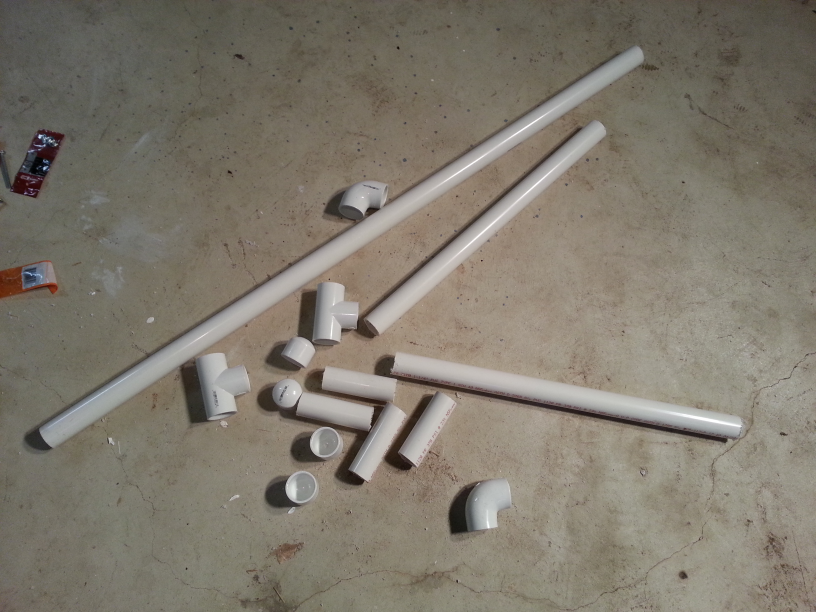
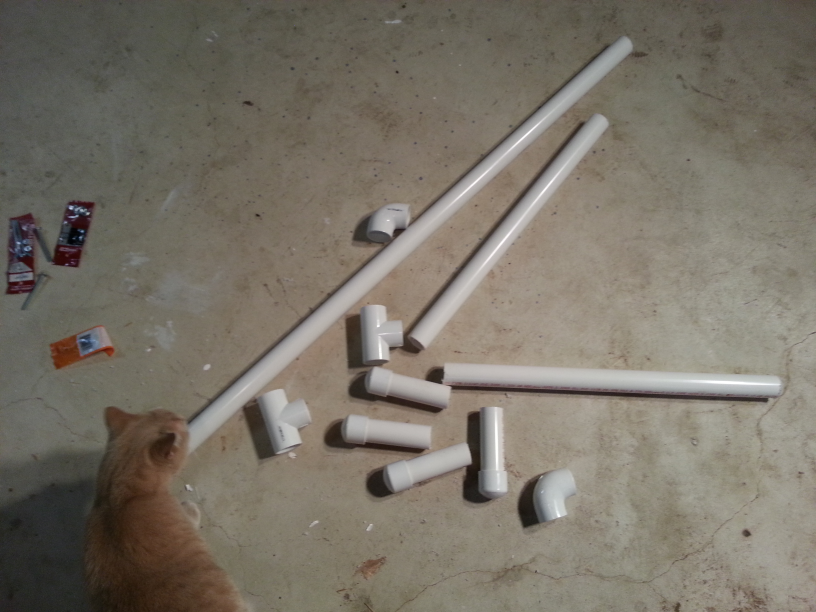
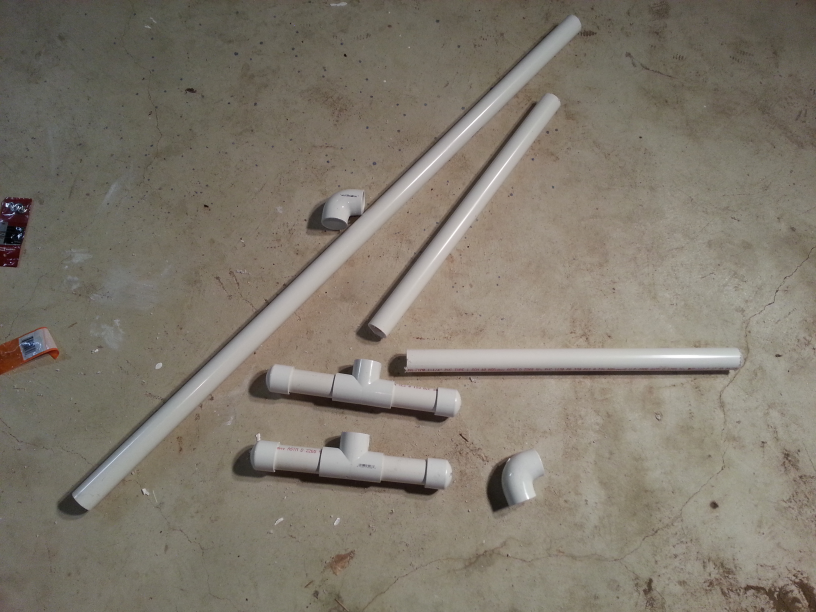


See, that was easy, right? No glue, just push it all together. It's a little disappointing that it did not include power tools, but don't worry, because this is where I whipped out my trusty drill after marking where I wanted the eye bolts to go. The shop light fixture hangs from these, so I measured where the chains would go in the shop light and chose eye bolt locations accordingly.
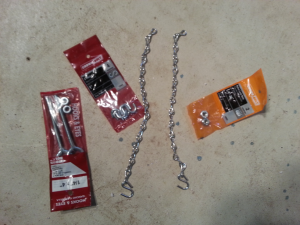
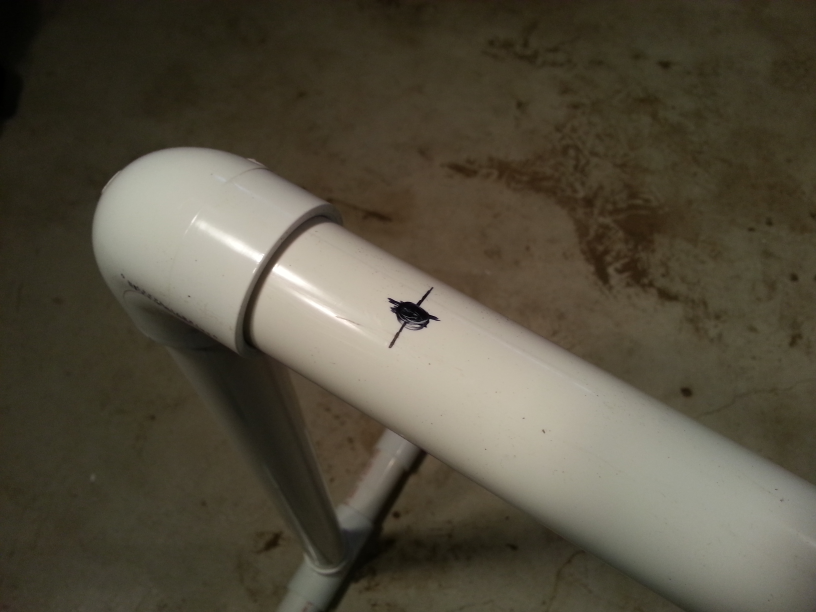
If you attempt this, be sure to wear your safety gear as I did; PVC pipe can be slippy and drills can make easily eye bolt holes in your hand if you're not careful (I recommend having some sleep too).
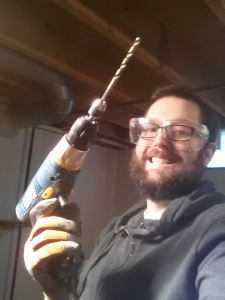
Once the holes were drilled in the pipe (though a little skewed), I fitted the eye bolts. In order to get a sturdy fixture, I first screwed a nut onto the eye bolt, then pushed the remainder through the pipe and applied a lock nut to the other side (though a regular nut would have done, I think). I then tightened the nuts on each side of the pipe so that the eye bolt was secure.
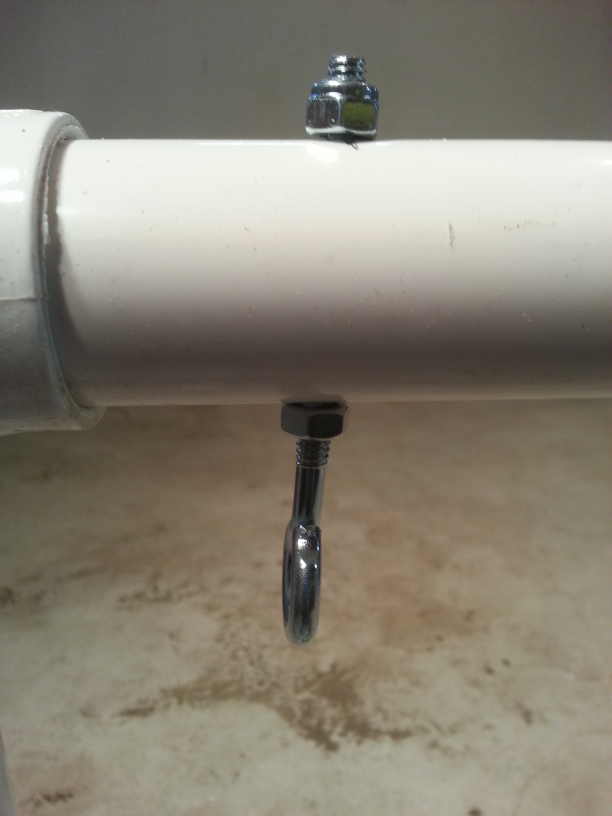
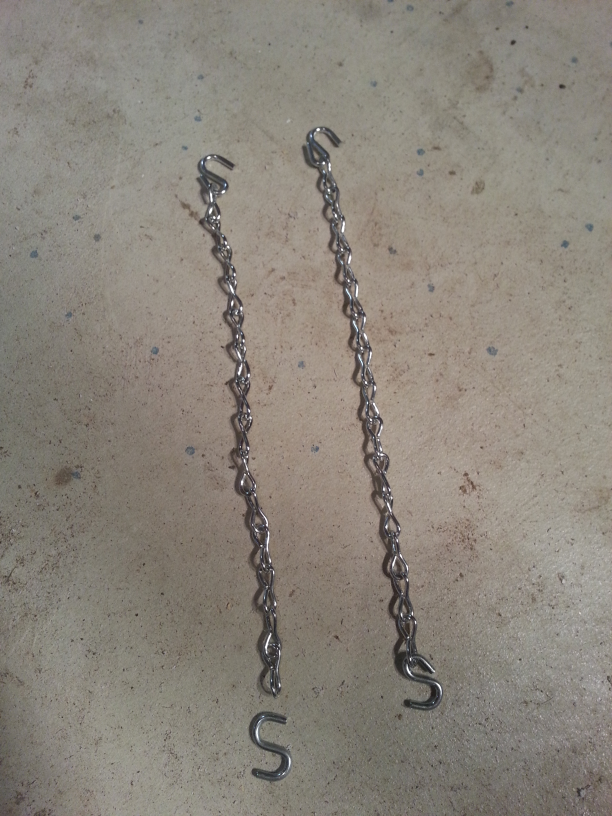
The shop light fixture came with its own chains for suspending it, however, only one end of these chains had a hook, so I carefully crimped S hooks onto the other ends of the chains. I then hooked one end into the corresponding eye bolt and the other into the light fixture and that was job done.

The height is even adjustable by threading the hook through the eye and hooking back into the chain.
With the assembly complete, I placed the new stand over Chrissy's seedlings and plugged it into our timer ready for her to be surprised when she gets home or reads this (whichever is first).
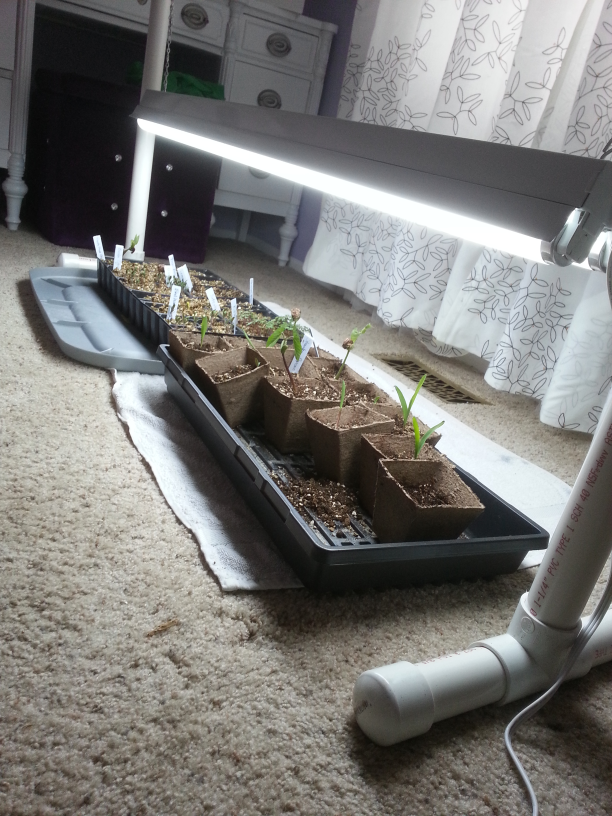
Now, I've been awake for far too long so I'm off to play video games and eat snacks before a well-earned nap.


